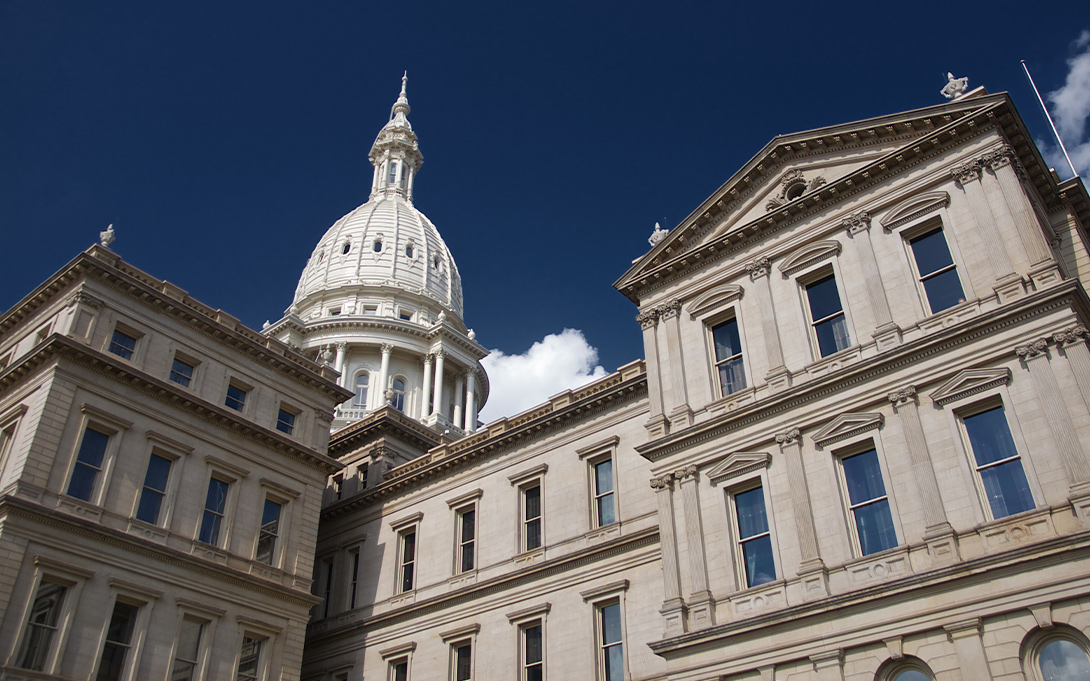
Pluralities of local government leaders across Michigan say the state’s recently repealed "Right-to-Work" law had no impact on issues such as community business growth, the ability of their local government to lure or keep public sector employees, or the fiscal health of their jurisdiction. A majority say it had no impact on relationships between the jurisdiction’s government and its employee unions. The findings in the latest Michigan Public Policy Survey (MPPS) are similar to the predictions made by local officials a decade ago when the law was adopted about the potential impact of the union-restricting law that was repealed this past March.
In 2023, just over one-quarter of Michigan’s 1,856 general purpose local governments (counties, cities, townships, and villages) report having one or more employee labor unions. This percentage is essentially unchanged since the last time the question was asked on the MPPS in 2013, a decade which saw the passage of “Right-to-Work” legislation in 2012 and subsequent federal court cases that prohibit requiring public sector employees’ financial support of a union.
Police unions are the most common type of local government union in Michigan, reported by 80% of jurisdictions in 2023 that have a public sector union of any kind. Next most common are unions for Department of Public Works (DPW) employees, followed by fire department unions.
“The fact that local leaders’ 2013 predictions about limited impacts of Right-to-Work laws generally match their retrospective evaluations in 2023 shows a remarkable stability in how governments operate across the state,” according to Debra Horner, MPPS senior program manager.
The impacts on Michigan’s economy and workforce related to Right-to-Work related to private sector unions, and its repeal in March 2023, are the subject of debate in political and business circles. The biggest change over the past decade in attitudes about Right-to-Work’s impact regards the relationship between the official’s local government and its unions. In 2013, 28% statewide predicted the laws would have no impact on local government-union relations, while in 2023 a majority (55%) report there has been no impact.
The federal court rulings over the past decade have essentially retained the effect of Right-to-Work status for public sector employees today, and the percentage of officials saying they didn’t know how to evaluate their relationships with the unions more than doubled, from 11% to 27%.
“A decade later, a large majority of Michigan’s local leaders continue to express positive views about the relationship between their jurisdiction’s government and its employee labor unions. Statewide, 80% of local leaders from jurisdictions with unions believe their relationship is either ‘excellent’ or ‘good’,” noted Tom Ivacko, executive director at the Center for Local, State, and Urban Policy (CLOSUP) at the Ford School of Public Policy, which administers the MPPS.
Local leaders also continue to express more positive than negative assessments when it comes to the unions’ effects on the jurisdiction’s overall performance. In 2023, 29% of local leaders say their employees’ unions have been assets to overall jurisdiction performance over the past year, while 18% say they have been liabilities.
The data presented in this policy brief come from the Spring 2023 MPPS.
The program is a partnership with the Michigan Municipal League, Michigan Townships
Association, and Michigan Association of Counties. The Spring 2023 wave was conducted February 6 – April 17, 2023. Respondents include county administrators, board chairs, and clerks; city mayors, managers, and clerks; village presidents, managers, and clerks; and township supervisors, managers, and clerks from 1,307 jurisdictions across the state, resulting in a 70% response rate by unit.
The full briefing can be seen here.
For more information: https://closup.umich.edu/michigan-public-policy-survey/mpps-2023-spring

